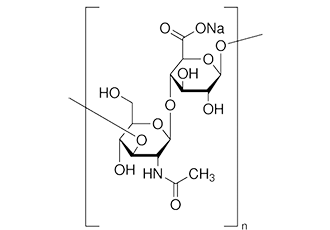Synonyms
sodium hyaluronate powder, hyaluronic acid; hydluronic acid; hyalobarrier gel; haluronic acid; hyaluronic acid sodium; hyaluronic acid na-salt, hyaluronin; hyalgan; healon
Technical Data
CAS Number: 9067-32-7
Molecular Formula: (C14H20NNaO11)n
Molecular Weight: 403.31
FabriChem Specifications
| ANALYSIS | SPECIFICATIONS |
|---|---|
| Description | Fine white powder, with no odor |
| Infrared Spectrum | To Pass |
| pH of a 0.5% Aqueous Solution | 5.5 ~ 7.5 |
| Water Content (KF) | 10% Max. |
| Residue on Ignition | 15% Max. |
| Protein Content | 0.05% Max. |
| Glucuronic Acid Content (dry basis) | 45.9% Min. |
| Sodium Hyaluronate (dry basis) | 95% Min. |
| Total Aerobic Plate Count | < 100 CFU/g |
| Mold & Yeast | < 100 CFU/g |
| Salmonella | Absent |
| E. Coli | Absent |
| Staphylococcus Aureus | Absent |
| Pseudomonas Aeruginosa | Absent |
| Heavy Metals | 20 ppm Max. |
| Arsenic | 2 ppm Max. |
| Lead | 1 ppm Max. |
| Nonconforming Organisms | None Recovered |
| Solubility | 0.5% W/V in Freshly Distilled H2O |
| Complete Appearance | 0.5% Aqueous Solution (clear, slightly opalescent, colorless, viscous liquid) |
| Total Nitrogen (dry basis) | --- |
| Molecular Weight | 1.0 ~ 1.1 x 106Da |
| Particle sizes | NLT 90% through 80 Mesh |
| Preservative | None |

